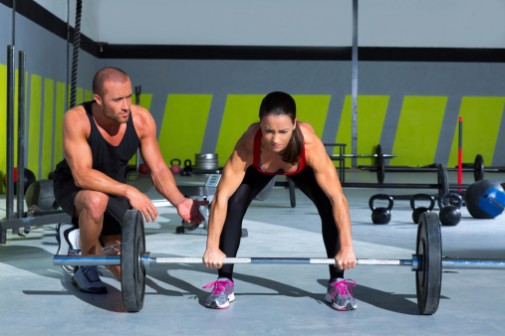CrossFit: Can you endure this workout?

CrossFit. It has its own lingo and a rapidly growing population of workout disciples who swear by its effectiveness—from elite athletes to Navy SEALs to next-door neighbors. The workouts of the day (WODs, as they’re known by participants) go by girls’ names, and the gyms aren’t “gyms”—they’re called “boxes.”
Welcome to the world of CrossFit—a strength training/conditioning system that relies on varied exercises performed with high speed and intensity. Think P90X on steroids—with monster truck tires.
An example: WOD “Helen” consists of three rounds of a 400-meter run; 21 kettleball swings (52 pounds); and 12 pull-ups.
How fast should you try the “Helen?” As fast as humanly possible. Time yourself. Then next time, beat that time.
Therein lies the issue, for some experts. CrossFit workouts emphasize speed and muscle exhaustion, sometimes at the expense of correct form. And that expense can be high. Think, your ACL or your spine.
“Any time you incorporate speed into a workout, you’re running the risk of injury because you lose good mechanics,” says Teresa Beckman, a physical therapist at Advocate Condell Medical Center in Libertyville, Ill. “Overworking tendons and muscles can have negative effects on joints as well. You have to listen to your body, and focus on good form while exercising.”
Many of the WODs involve moves that one needs to learn over time to do correctly, or learn only when training to become an Olympic athlete. Consider the “King Kong,” one of the few WODs without a female name: three rounds of one deadlift at 455 pounds, two muscle-ups, three squat-cleans at 250 pounds and then four handstand pushups. Not familiar with those exercises? Doesn’t matter. You can’t do them. And you probably shouldn’t attempt them. (Consider what might cushion the blow if one of your arms gives out during a handstand push-up.)
So who should?
“People who have a basic knowledge base of fitness movements, running or exercising at a much higher intensity,” says Ashley Carlson, physical therapist and Boot Camp instructor at Advocate Condell’s Centre Club in Libertyville, Ill. “People need to know and understand many of these movements before they get started with a high-intensity, interval workout like this.”
Because the CrossFit workouts incorporate elements of gymnastics, plyometrics, strength, cardio and callisthenic training, Carlson says, “Make sure you are listening to your body. If something doesn’t feel right, or you’re experiencing ‘pain’ versus just ‘muscle fatigue,’ then slow down or stop what you’re doing. Always warm up before you start any kind of exercise class or regimen, and make sure to stretch afterward—flexibility is an important part of these intense workouts.”
As a training system, CrossFit workouts do have their rightful place in the fitness world. Experts tout the program’s cardiovascular and metabolic boosts, as well as the program’s overall strengthening benefits.
It also seems, however, that going into this workout system blindly can be a bad plan. So while you have likely heard this many times before, when it comes to this kind of workout, make sure that before you begin any new exercise regimen, you consult your doctor.
Related Posts
Comments
2 Comments
About the Author
health enews staff is a group of experienced writers from our Advocate Health Care and Aurora Health Care sites, which also includes freelance or intern writers.


















Cross fit workout is an effective way to get fit and your article explain it differently. BOOKMARKED!! Thanks…
More and more people the gym, and your knowledge of Crossfit is really rewarding. Thanks for sharing !!